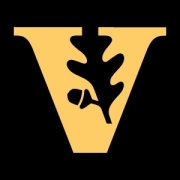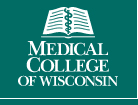Chemotherapy Plus Radiation Therapy With or Without Surgery in Treating Patients With Stage IIIA Non-small Cell Lung Cancer
| Status: | Completed |
|---|---|
| Conditions: | Lung Cancer, Lung Cancer, Cancer |
| Therapuetic Areas: | Oncology |
| Healthy: | No |
| Age Range: | 18 - Any |
| Updated: | 4/21/2016 |
| Start Date: | March 1994 |
| End Date: | November 2013 |
A Phase III Comparison Between Concurrent Chemotherapy Plus Radiotherapy and Concurrent Chemotherapy Plus Radiotherapy Followed by Surgical Resection for Stage IIIA (N2) Non-Small Cell Lung Cancer
RATIONALE: Drugs used in chemotherapy use different ways to stop tumor cells from dividing
so they stop growing or die. Combining radiation therapy with chemotherapy may kill more
tumor cells. It is not yet known if chemotherapy plus radiation therapy is more effective
with or without surgery for lung cancer.
PURPOSE: Randomized phase III trial to compare the effectiveness of combining cisplatin,
etoposide, and radiation therapy with or without surgery in treating patients who have stage
IIIA non-small cell lung cancer.
so they stop growing or die. Combining radiation therapy with chemotherapy may kill more
tumor cells. It is not yet known if chemotherapy plus radiation therapy is more effective
with or without surgery for lung cancer.
PURPOSE: Randomized phase III trial to compare the effectiveness of combining cisplatin,
etoposide, and radiation therapy with or without surgery in treating patients who have stage
IIIA non-small cell lung cancer.
OBJECTIVES:
Primary
- Compare the progression-free survival, median (2-year) survival, and long-term (5-year)
survival in patients with newly diagnosed, stage IIIA (N2) non-small cell lung cancer
treated with radiotherapy concurrently with cisplatin and etoposide with or without
surgical resection.
Secondary
- Compare the patterns of local and distant failure in patients treated with these
regimens.
- Determine the relationship of tobacco use, alcohol use, and diet with toxicity of these
regimens and outcome in both men and women.
OUTLINE: This is a randomized, multicenter study. Patients are stratified by contralateral
mediastinal sampling or biopsy (yes vs no), tumor stage (T1 vs T2 vs T3), and performance
status (70-80% vs 90-100%). Patients are randomized to 1 of 2 treatment arms.
- Arm I: Patients receive induction with cisplatin IV over 1 hour on days 1 and 8 and
etoposide IV over 1 hour on days 1-5. Treatment continues every 4 weeks for 2 courses
in the absence of disease progression or unacceptable toxicity. Beginning within 24
hours of the first dose of chemotherapy, patients undergo induction radiotherapy 5 days
a week for 5 weeks in the absence of disease progression or unacceptable toxicity.
Patients without local progression or distant metastases at 2-4 weeks after completion
of course 2 undergo resection approximately 3-5 weeks after completion of course 2. All
visible, accessible bronchopulmonary, hilar, and mediastinal lymph nodes are excised.
The choice of surgical procedure (thoracotomy, lobectomy, or pneumonectomy with en bloc
resection of tumor extending into the parietal pleura, chest wall, pericardium, or
diaphragm) is at the discretion of the surgeon. Patients who undergo resection receive
2 additional courses of chemotherapy alone beginning 4-6 weeks postoperatively.
Patients with unresectable disease or who are medically unfit for or refuse resection
receive 2 additional courses of chemotherapy alone beginning immediately after
completion of course 2.
- Arm II: Patients undergo induction chemoradiotherapy as in arm I but do not undergo
resection. Patients without local progression or distant metastases within 1 week
before anticipated completion of induction radiotherapy receive 2 additional courses of
chemotherapy beginning immediately after completion of course 2. Patients without local
or distant progression after completion of course 4 undergo boost radiotherapy for 8
days.
Patients are followed every 2 months for 1 year, every 3 months for 2 years, and then every
6 months thereafter.
PROJECTED ACCRUAL: A total of 510 patients will be accrued for this study within 4.9 years.
Primary
- Compare the progression-free survival, median (2-year) survival, and long-term (5-year)
survival in patients with newly diagnosed, stage IIIA (N2) non-small cell lung cancer
treated with radiotherapy concurrently with cisplatin and etoposide with or without
surgical resection.
Secondary
- Compare the patterns of local and distant failure in patients treated with these
regimens.
- Determine the relationship of tobacco use, alcohol use, and diet with toxicity of these
regimens and outcome in both men and women.
OUTLINE: This is a randomized, multicenter study. Patients are stratified by contralateral
mediastinal sampling or biopsy (yes vs no), tumor stage (T1 vs T2 vs T3), and performance
status (70-80% vs 90-100%). Patients are randomized to 1 of 2 treatment arms.
- Arm I: Patients receive induction with cisplatin IV over 1 hour on days 1 and 8 and
etoposide IV over 1 hour on days 1-5. Treatment continues every 4 weeks for 2 courses
in the absence of disease progression or unacceptable toxicity. Beginning within 24
hours of the first dose of chemotherapy, patients undergo induction radiotherapy 5 days
a week for 5 weeks in the absence of disease progression or unacceptable toxicity.
Patients without local progression or distant metastases at 2-4 weeks after completion
of course 2 undergo resection approximately 3-5 weeks after completion of course 2. All
visible, accessible bronchopulmonary, hilar, and mediastinal lymph nodes are excised.
The choice of surgical procedure (thoracotomy, lobectomy, or pneumonectomy with en bloc
resection of tumor extending into the parietal pleura, chest wall, pericardium, or
diaphragm) is at the discretion of the surgeon. Patients who undergo resection receive
2 additional courses of chemotherapy alone beginning 4-6 weeks postoperatively.
Patients with unresectable disease or who are medically unfit for or refuse resection
receive 2 additional courses of chemotherapy alone beginning immediately after
completion of course 2.
- Arm II: Patients undergo induction chemoradiotherapy as in arm I but do not undergo
resection. Patients without local progression or distant metastases within 1 week
before anticipated completion of induction radiotherapy receive 2 additional courses of
chemotherapy beginning immediately after completion of course 2. Patients without local
or distant progression after completion of course 4 undergo boost radiotherapy for 8
days.
Patients are followed every 2 months for 1 year, every 3 months for 2 years, and then every
6 months thereafter.
PROJECTED ACCRUAL: A total of 510 patients will be accrued for this study within 4.9 years.
DISEASE CHARACTERISTICS:
- Histologically or cytologically proven newly diagnosed, stage IIIA (T1-3, N2)
non-small cell lung cancer
- Eligible subtypes:
- Adenocarcinoma
- Large cell carcinoma
- Squamous cell carcinoma
- Nonlobar and nondiffuse bronchoalveolar cell carcinoma
- Measurable or evaluable disease on chest x-ray and/or contrast CT scan
- Contrast thoracic CT required to complete staging
- Single primary bronchogenic tumor (no more than 1 parenchymal lung lesion)
- Pleural effusions allowed if 1 of the following conditions is met:
- Negative cytology on thoracentesis if effusions present before mediastinoscopy
or exploratory thoracotomy
- Effusion seen on CT scan but not on chest x-ray and deemed too small to tap
under CT or ultrasound guidance
- Positive ipsilateral mediastinal node(s) with or without positive ipsilateral hilar
nodes
- Mediastinal nodes separate from primary lesion on CT scan or surgical
exploration
- Histologic or cytologic proof of N2 disease by thoracotomy, mediastinoscopy,
mediastinotomy, Chamberlain procedure, Wang needle, or fine needle aspiration
under bronchoscopic or CT guidance
- Nodal biopsy or aspiration waived if all of the following conditions are met:
- Paralyzed left true vocal cord documented by bronchoscopy or indirect
laryngoscopy
- Nodes visible in Level 5 region on CT scan
- Distinct primary lesion separate from nodes on CT scan
- All mediastinal nodal involvement mapped (positive or negative)
- No positive nodes in contralateral mediastinum (supraclavicular areas and higher) and
neck
- Mediastinoscopy, mediastinotomy, Chamberlain procedure, or thoracotomy required
for nodes larger than 1 cm on contrast CT scan
- Surgery waived if nodes negative or no larger than 1 cm on CT scan
- Lymphadenopathy allowed if biopsy proof of a benign cause
- No metastases by contrast CT or MRI scan of the brain, bone scan, CT scan of the
lungs to exclude other ipsilateral or contralateral parenchymal lesions, and contrast
CT scan of the upper abdomen including entire liver and adrenals
- No hepatomegaly or splenomegaly by physical examination or CT scan unless
documentation of a benign cause
- No pericardial effusion
- No superior vena cava syndrome
- No prior diagnosis of lung cancer
PATIENT CHARACTERISTICS:
Age:
- 18 and over
Performance status:
- Karnofsky 90-100% (70-80% allowed if albumin at least 0.85 times lower limit of
normal and weight loss no greater than 10% within 3 months before diagnosis)
Hematopoietic:
- White blood cell count (WBC) at least 4,000/mm^3 OR
- Granulocyte count at least 2,000/mm^3
- Platelet count normal
- Hemoglobin at least 10.0 g/dL (less than 8.5 g/dL allowed if no marrow involvement
with tumor)
Hepatic:
- See Performance status
- Bilirubin no greater than 1.5 times upper limit of normal (ULN)*
- Serum glutamate oxaloacetate transaminase (SGOT) and serum glutamate pyruvate
transaminase (SGPT) no greater than 1.5 times ULN* NOTE: * Unless documentation of a
benign cause
Renal:
- Creatinine clearance at least 50 mL/min
Cardiovascular:
- No myocardial infarction within the past 3 months
- No active angina
- No unstable arrhythmia
- No congestive heart failure
Pulmonary:
- Forced expiratory volume at one second (FEV1) at least 2.0 liters OR
- Predicted postresection FEV1 at least 800 mL based on quantitative V/Q scan
- Diffusion capacity of lung for carbon monoxide (DLCO) at least 50% predicted
(corrected for hemoglobin) if pneumonectomy planned or likely after induction
chemotherapy
Other:
- No clinically significant hearing loss unless willing to accept the potential of
further loss
- No symptomatic peripheral neuropathy
- No peptic ulcer disease under active treatment
- No other medical illness not controllable by appropriate medical therapy
- No other malignancy within the past 5 years except adequately treated basal cell or
squamous cell skin cancer, carcinoma in situ of the cervix, or ductal or lobular
carcinoma in situ of the breast
- Not pregnant or nursing
- Negative pregnancy test
- Fertile patients must use effective contraception
PRIOR CONCURRENT THERAPY:
Biologic therapy:
- No concurrent colony-stimulating factors
Chemotherapy:
- No prior chemotherapy for lung cancer
- No concurrent chemotherapy for another condition (such as arthritis)
Endocrine therapy:
- Not specified
Radiotherapy:
- No prior radiotherapy for lung cancer
Surgery:
- See Disease Characteristics
- No prior resection of primary tumor
We found this trial at
16
sites
CCOP - Carle Cancer Center The Carle Cancer Center Community Clinical Oncology Program (CCOP) in...
Click here to add this to my saved trials
Vanderbilt-Ingram Cancer Center The Vanderbilt-Ingram Cancer Center, located in Nashville, Tenn., brings together the clinical...
Click here to add this to my saved trials
Click here to add this to my saved trials
Click here to add this to my saved trials
Click here to add this to my saved trials
Click here to add this to my saved trials
Click here to add this to my saved trials
Click here to add this to my saved trials
Click here to add this to my saved trials
Medical College of Wisconsin The Medical College (MCW) of Wisconsin is a major national research...
Click here to add this to my saved trials
Click here to add this to my saved trials
Click here to add this to my saved trials
5150 Centre Ave
Pittsburgh, Pennsylvania 15232
Pittsburgh, Pennsylvania 15232
(412) 647-2811

University of Pittsburgh Cancer Institute Founded in 1985, the University of Pittsburgh Cancer Institute (UPCI)...
Click here to add this to my saved trials
Click here to add this to my saved trials
Click here to add this to my saved trials


